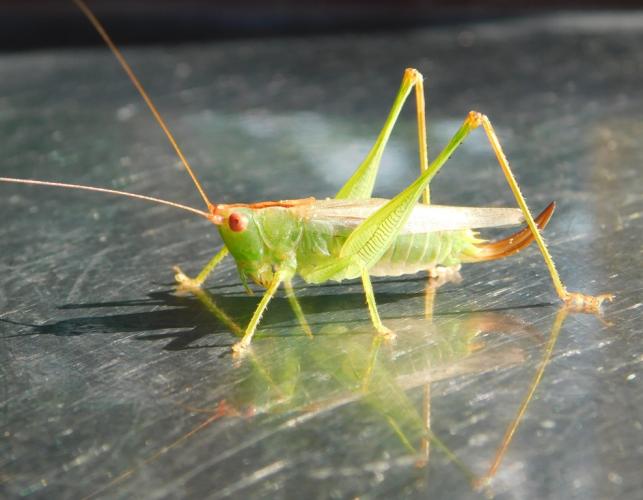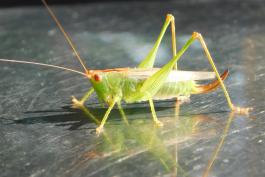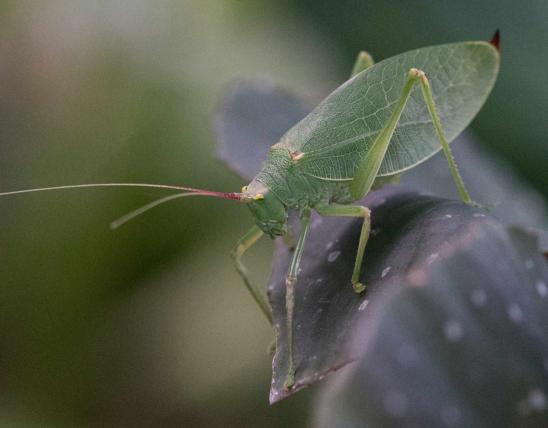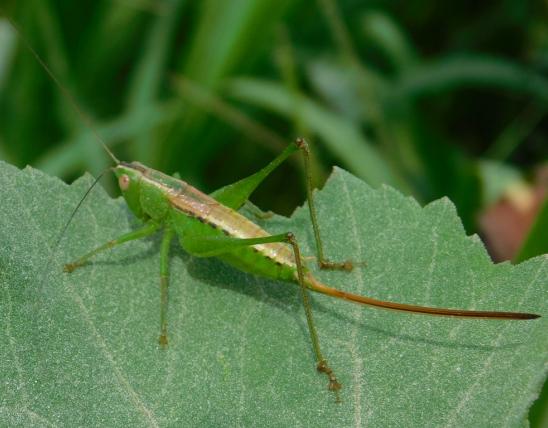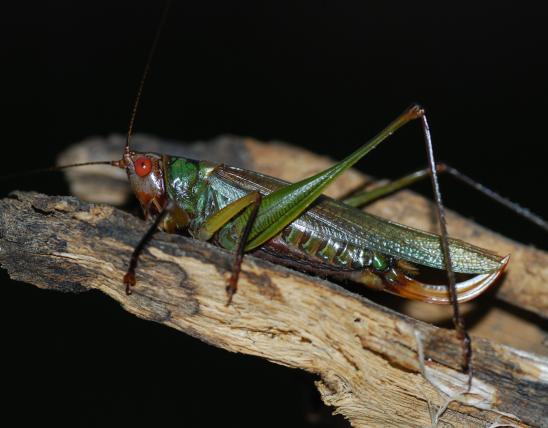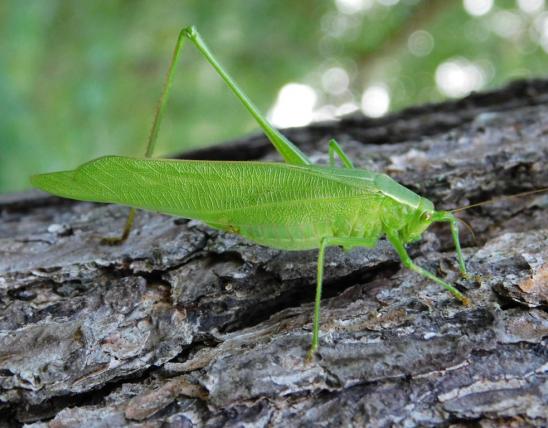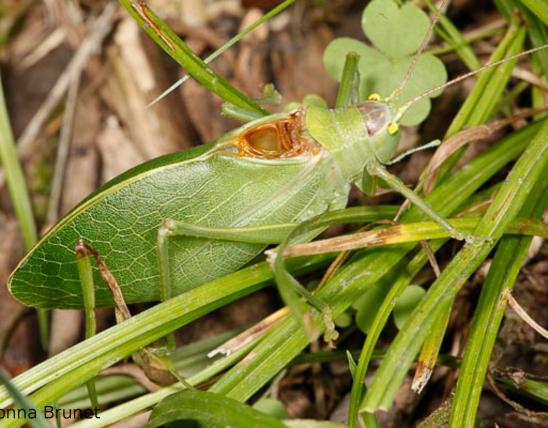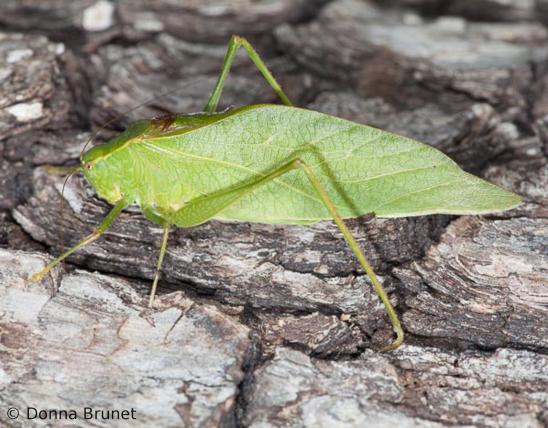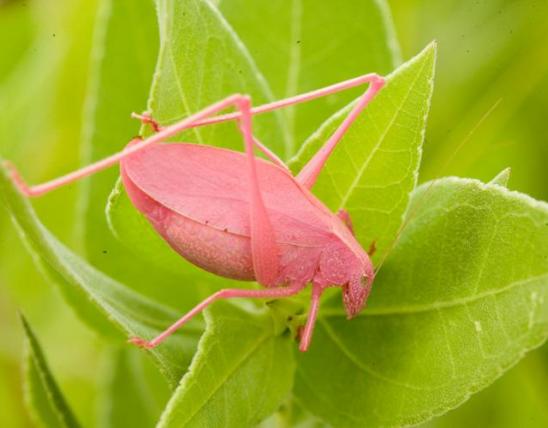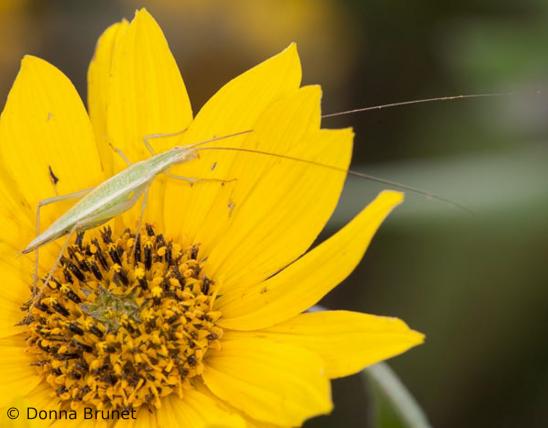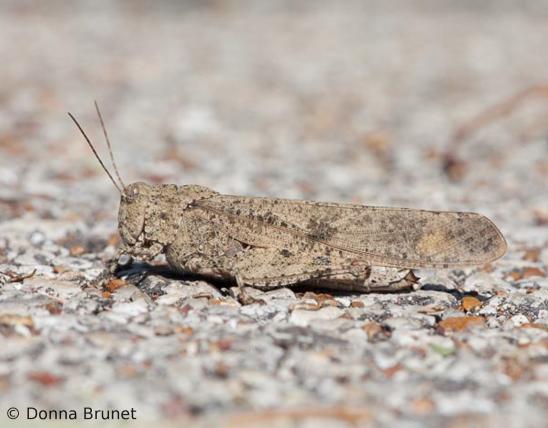
The common meadow katydid has orange or reddish eyes, an unmottled green face, and a relatively large head. Though generally small for its genus, reaching only about 1 inch long, its body looks fairly bulky. The pronotum (shieldlike or shoulderlike plate covering the thorax) is brown on the top surface, edged with darker brown or black. The wings are also brownish, and there’s a brown stripe atop the head, so there’s a fairly continuous brown stripe along the top surface, contrasting with the grass-green body.
Note that coloration varies among populations in different regions, with some individuals having brown or rusty highlights, and others having a truly blackish cast.
The song is a long, rapid series of skipping tics followed by a dry buzz. The sound, made day and night, has been likened to the sound of a pulsating circular lawn sprinkler as it ratchets around.
The ovipositor of females (used for depositing eggs) is flattened, swordlike, and in this species distinctively curved.
The common meadow katydid is one of about 250 species of katydids, also called long-horned grasshoppers (family Tettigoniidae), in North America north of Mexico. They all have very long antennae, and many resemble green leaves and grasses.
Learn more about Missouri’s katydids on their group page.
Length (not counting appendages): to about 1 inch.
Statewide. Common and widespread in the eastern United States, including the Midwest.
Habitat and Conservation
The common meadow katydid lives in a variety of habitats but is most common in open, grassy areas. Its coloration helps it blend in with the grasses and forbs it lives among and eats.
Food
Like other meadow katydids, this species eats plant material, especially leaves. They have also been recorded scavenging from a variety of other organic materials.
Life Cycle
Like other members of order Orthoptera (including the crickets and grasshoppers), common meadow katydids have simple development, with no great difference between juvenile and adult forms. Immature individuals are smaller and lack wings.
As with other meadow katydids, the female common meadow katydid has a long, curved ovipositor (egg-laying appendage) at the tip of her abdomen. It looks like a flattened, curved knife or sword. These appendages are not harmful to humans. They are used only to deposit eggs.
Human Connections
Katydids may inflict some damage to crops, but generally their populations are low enough not to cause serious problems.
Some large species of katydids, including coneheads and meadow katydids, have strong jaws for cracking open seeds and can give you a hearty nip. Handle with care.
It’s hard to imagine a late-summer day without the high-pitched buzzing and rasping sounds of meadow katydids. Few people are aware of the diversity of insect singers that fill our summer and fall days and nights with distinct, unique songs, as identifiable as the various bird songs.
Ecosystem Connections
This is what bird food looks like. Katydids are an important link in the food chain between plants and animals such as birds, reptiles, and many mammals, that hunt protein-rich, nutritious insects for a living.
Katydids are important food for great golden digger wasps. The mother wasps capture and paralyze katydids and crickets, fly or haul them to their burrows, then place them in the nest cells as food for their young.
